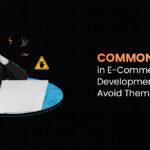In today’s competitive digital marketplace, simply having an online store isn’t enough. With thousands of ecommerce websites selling similar products, standing out requires one thing above all SEO for ecommerce.
Effective ecommerce SEO ensures your products appear when customers search for them, helping you attract high-intent visitors who are ready to buy. Let’s explore how to optimise your online store to increase visibility, traffic, and conversions.
What Is Ecommerce SEO?
Ecommerce SEO is the process of optimising your online store so that your products rank higher in search engine results. It involves a combination of technical setup, keyword strategy, content optimisation, and user experience improvements.
Unlike traditional SEO, ecommerce SEO focuses specifically on product discoverability, category visibility, and transactional intent helping you convert organic visitors into paying customers.
Why Ecommerce SEO Matters
Here’s why SEO is essential for every online store:
- Organic visibility drives consistent traffic — unlike paid ads that stop when you stop spending.
- Search intent matches purchase intent — users searching for products are already closer to conversion.
- Optimised stores build trust and authority, improving both user experience and brand perception.
Simply put, investing in ecommerce SEO means investing in long-term, cost-effective growth.
Core Components of Ecommerce SEO
1. Keyword Research with Buying Intent
Start by identifying keywords that reflect real buyer intent, such as:
- “Buy running shoes online”
- “Best organic skincare products”
- “Affordable laptops under ₹50,000”
Use a mix of:
- Short-tail keywords (broad category terms)
- Long-tail keywords (specific purchase-driven queries)
Pro Tip: Include product modifiers like best, cheap, buy online, latest, or review to target users closer to conversion.
2. Optimise Product Pages for Search
Each product page is a potential landing page for search traffic. Optimise them with:
- SEO-friendly URLs (e.g., /mens-running-shoes-nike/)
- Unique meta titles and descriptions
- Descriptive product names with keywords
- Engaging product descriptions that highlight benefits and features naturally
- Alt-text for all product images
A well-optimised product page should inform, engage, and convert.
3. Strengthen Category Pages
Category pages are often the most powerful pages for ecommerce SEO because they capture high-volume, intent-driven keywords (e.g., “Men’s Sports Shoes” or “Luxury Watches for Women”).
Optimise them by:
- Writing a short introductory paragraph about the category
- Adding internal links to subcategories or related blogs
- Including keyword-rich headings and descriptive content
This helps both users and search engines understand your product range better.
4. Use Structured Data (Schema Markup)
Implement Product Schema Markup to help Google understand your product details. Add structured data for:
- Product name and description
- Price, availability, and SKU
- Ratings and reviews
- FAQs
Schema markup improves your chances of appearing in rich results like price snippets, star ratings, and availability info — boosting your click-through rate (CTR).
5. Optimise Site Speed and Mobile Experience
A slow or unresponsive site can hurt your rankings and sales.
Focus on:
- Compressing images
- Using lazy loading
- Reducing unnecessary scripts
- Implementing mobile-first design
Google prioritises fast, mobile-friendly stores that deliver seamless experiences.
6. Build Internal Linking
Strong internal linking helps search engines crawl your website efficiently and keeps users exploring your store.
Link from:
- Category pages → Product pages
- Product pages → Related or complementary products
- Blogs → Category or product pages
Example:
A blog on “Top 10 Summer Dresses” should link to relevant product pages where users can make a purchase.
7. Create Content That Supports Your Products
Content marketing is a powerful extension of ecommerce SEO. Create educational and inspirational content that aligns with your products, such as:
- Buying guides (e.g., “How to Choose the Right Laptop for Work”)
- Product comparisons
- How-to blogs or styling tips
- Gift idea lists
This type of content attracts traffic and builds topical authority both crucial for SEO success.
8. Leverage Reviews and User-Generated Content
Authentic reviews help build trust and improve SEO. They also provide fresh content that keeps product pages updated.
Encourage users to leave reviews, upload photos, or rate their purchases all of which send positive signals to search engines.
9. Optimise for Local and Voice Search
If your ecommerce store also has a physical presence, optimise for local SEO:
- Add your business to Google Maps
- Use local keywords like “buy furniture online in Mumbai”
- Collect local reviews
For voice search, focus on conversational queries and FAQs like:
“What are the best shoes for gym workouts?”
10. Build Backlinks and Digital PR
High-quality backlinks from trusted websites boost your store’s authority.
You can earn them by:
- Publishing share-worthy content (guides, research, infographics)
- Partnering with influencers or bloggers
- Getting featured in product roundups or reviews
Tracking Ecommerce SEO Performance
Use tools like Google Search Console, Google Analytics, and Ahrefs to monitor:
- Organic traffic and keyword rankings
- Click-through rates (CTR)
- Conversion metrics (sales, revenue, leads)
Regularly analyse data to identify what’s working and where you can improve.
Final Thoughts
SEO for ecommerce is not a one-time setup it’s a continuous process of improving visibility, usability, and trust. When done right, it becomes one of the most sustainable ways to drive traffic and revenue.
By combining solid technical foundations with helpful content and an exceptional user experience, your online store can rise above competitors and dominate search results driving organic growth that lasts.



